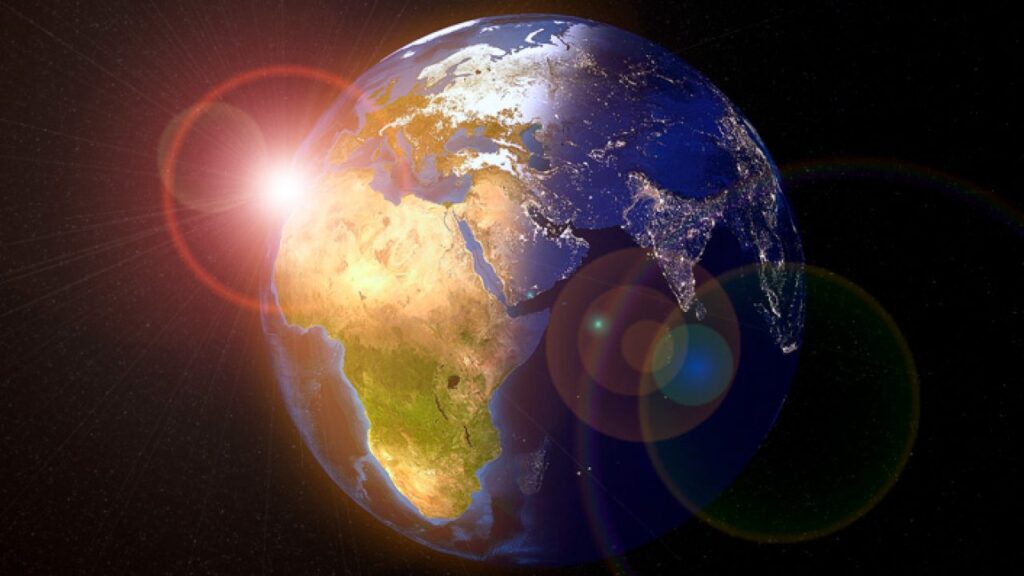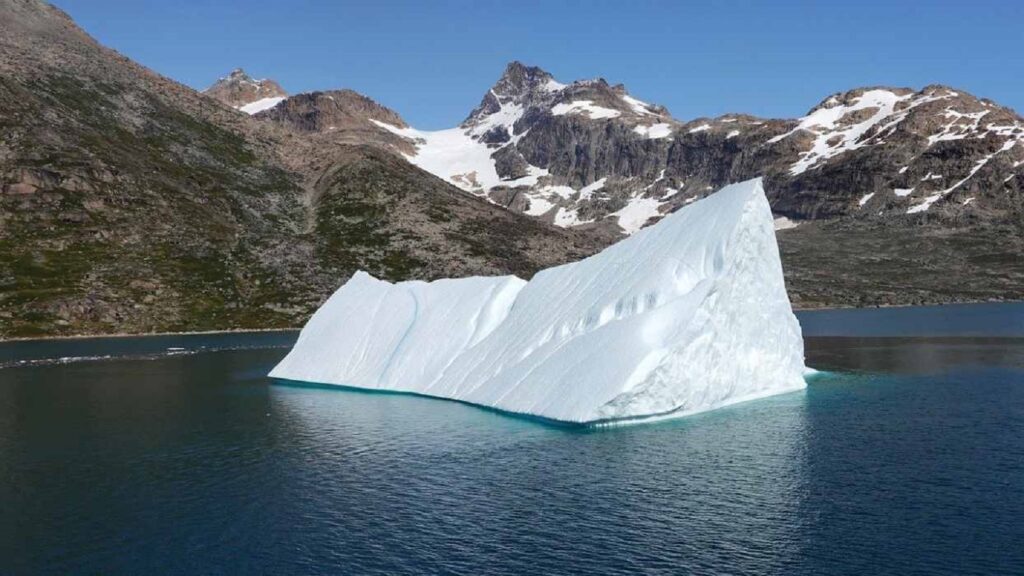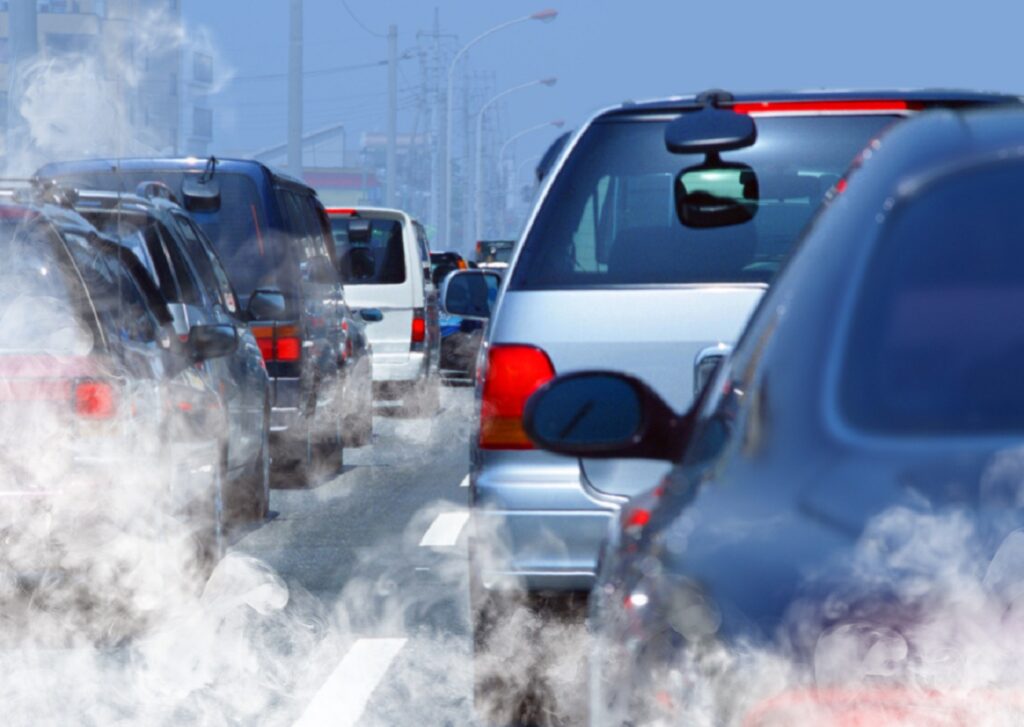The Greenhouse Effect is a natural activity caused by the thermal radiation of the planet that is absorbed by atmospheric gases, which results in an increase in temperature and humidity. However, in recent years the combination of carbon dioxide pollution and greenhouse gases have caused climate change on earth. Below we show the Causes and Consequences of the Greenhouse Effect.

The greenhouse effect
This is a natural phenomenon caused when the thermal radiation generated by the earth's surface is absorbed by the Greenhouse Effect Gases (GHG) of the atmosphere and is scattered in all directions. The consequence of this radiation returning to the earth's surface and the lower atmosphere is an increase in the average temperature of the earth's surface. Otherwise the temperature of the earth's surface would be very low.
Most of the solar rays that are radiated in the visible light frequency pass through the atmosphere and heat the earth's surface, then radiating this solar energy in lower frequencies of infrared thermal radiation. This thermal radiation is absorbed by greenhouse gases, this in turn emits and spreads this thermal energy in different directions to the surface of the earth and the lower atmosphere.
This effect is very similar to the effect that the sun's rays produce when they pass through glass and increase the temperature of a room or garden greenhouse. However, this differs in the way in which the atmosphere absorbs heat with respect to what happens in the gardening greenhouse, in this the air currents are reduced, separating the hot air that remains inside the greenhouse and thus there is less loss convective heat.
The main benefit of the occurrence of atmospheric greenhouse gases is the increase in temperature on the earth's surface, because otherwise it would be around minus -18°C. However, the average temperature of the earth's surface is about 14°C, which indicates the importance for life of this natural phenomenon of the Greenhouse Effect. However, due to industrial processes and the accelerated deforestation and burning of fossil fuels, the thermal radiation of the earth's surface has increased, causing global warming and impacting the earth's climate.
Causes
One of the environmental impacts of the industrial development that was established at the end of the XNUMXth century has been the increase in the emission of carbon dioxide into the atmosphere and the decrease in vegetation due to the installation of factories and cities. The emission of carbon dioxide gases into the atmosphere occurs due to the increased use of fossil fuels for use in industrial processes and different means of transport.
Along with the industrialization of the economic pattern, the deforestation of large forest areas occurred, causing the transformation of carbon dioxide to decrease and consequently remain longer in the atmosphere. This is because as there are fewer forests, fewer plants carry out the process of photosynthesis, which transforms carbon dioxide into oxygen that is released into the atmosphere and into sugars for plant nutrition.
Consequences
The decrease in forest surfaces and industrialization brought as a consequence that the temperature increased and together with terrestrial thermal radiation, more heat energy was emitted into the atmosphere and absorbed by the Greenhouse Gases of the atmosphere that later dispersed them to different parts of the world. planet, and for this reason the temperature increases throughout the globe, affecting the climate in the global sphere.
This global warming results in the melting of the icebergs at the poles, which raises the level of the seas and reduces the sources of fresh water on the planet. Changes in temperature affect the fauna and flora of the earth, such as corals, which have a hard time adapting to increases in seawater temperature. This leads to a decrease in biological diversity and the consequent imbalance of the planet's food chain. This climate change has a negative impact, with the consequent unexpected atmospheric phenomena such as hurricanes and timeless high rainfall.
Greenhouse Gases
The Greenhouse Effect occurs in the atmosphere due to the presence of various gases, beginning with water vapor, followed by carbon dioxide, which even though it is a gas found in small quantities in the atmosphere, barely 0,035% This indicates, as a A tiny percentage of carbon dioxide can have a big impact on the atmosphere. Which explains why by increasing this percentage due to pollution caused by human beings, it has such a negative impact on the Greenhouse Effect of the earth's atmosphere.
The transformation of carbon dioxide in the atmosphere is slow, about 50% of this gas takes about 30 years to be eliminated. On the other hand, the remaining 30% will take centuries to decompose and the other 20% of carbon dioxide will remain in the atmosphere for thousands of years. In addition to water vapor and carbon dioxide, methane gases, nitrous oxide, ozone and, together with these, chlorofluorocarbons, are involved in the Greenhouse Effect. These chlorofluorocarbon gases are gases produced by the activities of human beings since it is not a gas that is produced by nature.
Solar radiation
The radiation of the sun's energy is received at the earth's surface in the form of light energy and heat energy. From the star king "the sun" to the surface of the earth reaches about 341 Watts per square meter and in a short wave frequency. This energy is distributed between the Earth's atmosphere around 157 Watts and the one that reaches the Earth's surface about 184 Watts.
thermal radiation
The earth's surface, in addition to receiving light and heat or thermal energy from the sun, also emits thermal energy. This emission of thermal energy occurs because all organisms that have a temperature above absolute zero (which is the lowest possible temperature equal to -273°C or -459,67°F), radiate heat or thermal energy. Per year the thermal energy that radiates from the earth's surface is about 396 Watts per square meter and is infrared radiation. This thermal energy is absorbed by the atmosphere and returned to the earth's surface.
reflected radiation
The earth's atmosphere and the earth's surface reflect some of the sun's energy. Due to this, solar energy is in the atmosphere for a short time and then is dispersed out of it. Then, the sum of the energy received and the energy emitted is the total of the heat that the atmosphere receives and to achieve balance it has to be eliminated, being the energy reflected. The amount of reflected energy is 120 Watts/m2, this being about a third or so of the solar radiation received by the earth. Much of the thermal radiation emitted by the Earth's surface (infrared radiation) passes through the atmosphere and is scattered in space.
Climate change problematic
In a natural way, an exchange of energy is produced due to the greenhouse effect of the atmosphere, this is caused in view of the fact that the thermal radiation (infrared) that the terrestrial surface emits as the light energy that arrives by the solar irradiation that is not dispersed, is absorbed by the atmosphere, the surface of the earth, biotic factors, some abiotic components, which interact and have a constant cycle that is the Greenhouse Effect of the earth.
The gaseous and energy exchanges that take place in the atmosphere are the cause of the variations in the climate normally. As are the changes in temperature, rainfall, winds that are observed in the different seasons of the year. Due to this, while there is a constant flow of light and thermal energy, meteorological phenomena will occur in seasonal and predictable ways. The opposite occurs when the Greenhouse Effect due to carbon dioxide pollution generates high atmospheric temperatures and leads to the formation of hurricanes, cyclones, tsunamis, monsoons, among others.
International agreement
To try to reduce the emission of carbon dioxide gases into the atmosphere and avoid an increase in temperature and consequent variations in the climate caused by the greenhouse effect. Several countries of the world have signed agreements and Conventions within the framework of the United Nations Framework Convention on Climate Change, they are these:
- Kyoto Protocol: Agreement was signed in 1997, it incorporates a series of legally related objectives with the purpose of achieving the reduction of greenhouse gas emissions. Until this year 2020, the second period of this protocol is in force.
- Paris Agreement: This agreement was carried out in 2015 and will come into force as of this year 2020, when the Kyoto Protocol ends. Its objective is to promote sustainable development worldwide, achieving the development of economies without increasing gas emissions of industrial origin that affect the earth's climate.
Reduction of the Greenhouse Effect
With the purpose of lowering the emission of greenhouse gases, some countries are working on projects that allow the substitution of fossil fuels, through clean energy sources such as: solar, wind or geothermal energy. Likewise, in the metropolises of the planet they are planning policies and laws that, with their execution, will reduce the pollution caused by large industries, private transport and others.
Greenhouse effect and climate change
According to ecologists, the atmospheric Greenhouse Effect is being impacted by the emission of more gases due to industrial developments, such as carbon dioxide and methane. In a report from the Global Climate Report-October 2018 that year, with the exception of one month, all the other remaining months were hotter than the average since 1977. If this continues, the consequences are not very encouraging.
iceberg melting. Due to the increase in temperature and therefore the global warming of the planet, the melting of large masses of glaciers is taking place at an accelerated rate and this leads to an increase in the level of marine currents, a decrease in solar radiation that the earth's surface emitted into the atmosphere and release of methane.
Floods. Climate change has caused an increase in the tide and its waves, risking the population that lives in coastal areas. In the report presented in the Fifth Assessment Report of the Intergovernmental Panel on Climate Change, in 2014, in which a diagnosis was made between the years 1901 to 2010, indicating that the average sea level has risen about 19 centimeters. The prediction is that in 2100 it will rise another 15 or 90 centimeters and more than 92 million people will be at risk.
Strong Hurricanes. Although the Greenhouse Effect is not the direct cause of the occurrence of these meteorological phenomena, directly, although it does increase their magnitude. This happens because hurricanes are formed by the high temperatures of the sea that rises towards the atmosphere.
Increase in migrations. Due to the increase in temperature in different regions of the earth, altering the climatic conditions of these places, many animals travel to other places where the environmental conditions allow them to carry out their biological life cycle. According to data from the World Bank in the year 2050, about 140 million people have had to move from their places where they live due to droughts and floods.
soil desertification. The increase in temperature has resulted in the desertification of a large amount of land, producing an ecological imbalance as well as in the food chain. This desertification is the malnutrition of fertile soils in poor and unproductive, According to the United Nations Organization (UN), around 30% of agricultural soils on the planet are degraded.
Lost in agriculture and livestock. Climate changes have meant that the duration of the different seasons has varied and therefore the period of the growth cycles of plant and animal species have been altered. Coupled with the appearance of pests and diseases due to imbalances in the food chain. Likewise, farm animals have had their metabolism, health and reproduction altered, among others.
Famine in the population. The alteration of the climate and the consequent loss of agricultural soils and drought of water sources, affect agricultural production, causing the supply of cultivated food to decrease and the high demand for them to be met, thus increasing food shortages. The Food and Agriculture Organization of the United Nations (FAO) is alarmed at the negative impact of climate change on food production.
pandemics and diseases. The increase in temperature on the planet can accelerate the incidence of cardiovascular and respiratory diseases. As well as the appearance of infectious diseases that had been eradicated such as malaria, cholera or spread to places on the planet where they did not occur.
In order to solve the impact of technological and industrial developments on the climate and on the Greenhouse Effect of the atmosphere, each one of us has to commit to changing our position towards the environment, and to the extent of our possibilities, contribute to a change attitude and be more responsible citizens, participating with environmental groups in campaigns for compliance with the agreements signed by our governments to reduce the Greenhouse Effect.
I invite you to continue knowing the wonderful nature and how to learn to take care of it. Read the following posts:
- Measures to avoid Atmospheric Pollution
- Importance of Water for Living Beings
- Medicinal plants and what they are used for




